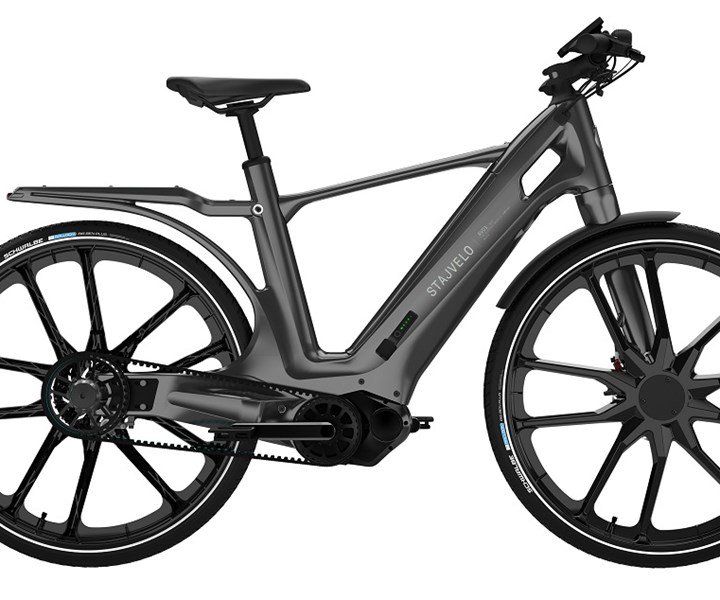Stajvelo e-bike built with Solvay long-fiber thermoplastic material
An injection-molded composite e-bike features thermoplastic composites.

Source | Solvay
Solvay (Alpharetta, Ga., U.S.) has announced that its Xencor long-fiber thermoplastic (LFT) compounds are being used by Stajvelo (Rue du Gabian, Monaco) for what is reportedly the world’s first e-bike made of advanced injection-molded composite materials.
Stajvelo selected Solvay’s long-fiber Xencor polyarylamide (PARA) compound based on its ability to meet stringent structural, mechanical and aesthetic requirements. Xencor PARA is said to significantly extend the performance capabilities of Solvay’s Ixef PARA compounds, which have replaced metal in medical devices, automotive exteriors and small appliances where a highly aesthetic surface finish is required.
“Stajvelo’s e-bike design embodies the hard-to-achieve balance between form and function, due in part to Xencor PARA’s unique combination of properties,” says Thierry Manni, founder and CEO of Stajvelo. “Thanks to Solvay’s polymer expertise and processing technology support, we were able to design a manufacturing process with optimal function integration and time-saving assembly operations.”
Solvay’s Xencor LFT compounds typically contain between 30 to 60% fiber reinforcement, depending on the polymer and grade. The fiber constitutes a critical structural element by creating an entangled 3D fiber skeleton within the final molded part. The strong fiber skeleton is said to provide superior structural properties and dimensional stability compared to traditional highly-filled, short fiber-reinforced polymers.
Xencor LFT compounds are intended to bridge the price-to-performance gap between short-fiber thermoplastics (SFT) and advanced composite materials. They combine high strength, outstanding crash/impact performance, thermal stability, low creep, excellent surface aesthetics and smooth processing characteristics. Solvay’s Xencor LFT compounds are suitable for semi-structural applications in a variety of markets including automotive, advanced transportation, construction, industrial, and consumer, as well as sports and leisure.
“Xencor compounds are designed to replace metal in semi-structural applications that require greater performance than is attainable with SFT products and where metal is not a desirable option due to weight or per-part cost,” says Eric Martin, global manager for Xencor LFT compounds for Solvay’s Specialty Polymers global business unit.
Related Content
-
Novel composite technology replaces welded joints in tubular structures
The Tree Composites TC-joint replaces traditional welding in jacket foundations for offshore wind turbine generator applications, advancing the world’s quest for fast, sustainable energy deployment.
-
CCG FRP panels rehabilitate historic Northamption Street Bridge
High-strength, composite molded, prefabricated panels solve weight problems for the heavily-trafficked bridge, providing cantilever sidewalks for wider shared use paths.
-
Swedish parking garage to incorporate decommissioned wind blades
Architect Jonas Lloyd is working with Vattenfall to design the multistory building with a wind blade façade, targeting eco-friendly buildings and creative ways to remove blades from landfills.

.jpg;width=70;height=70;mode=crop)














